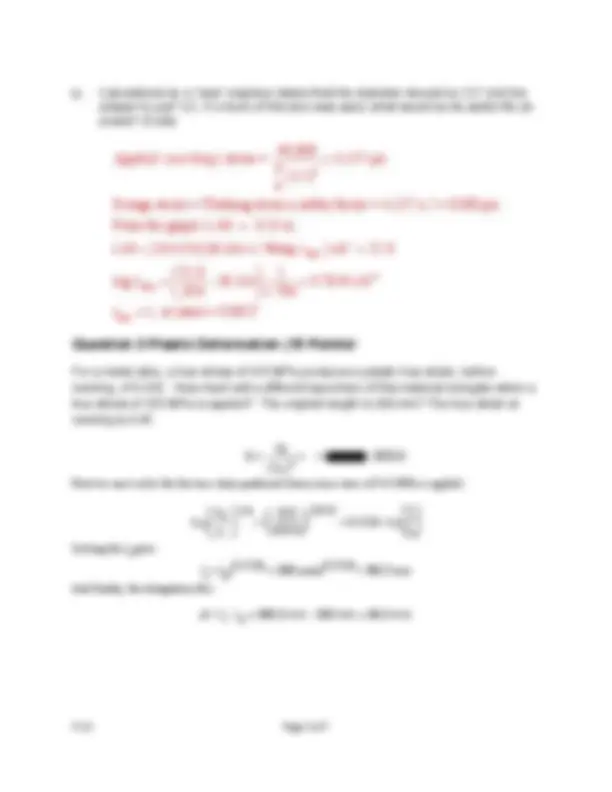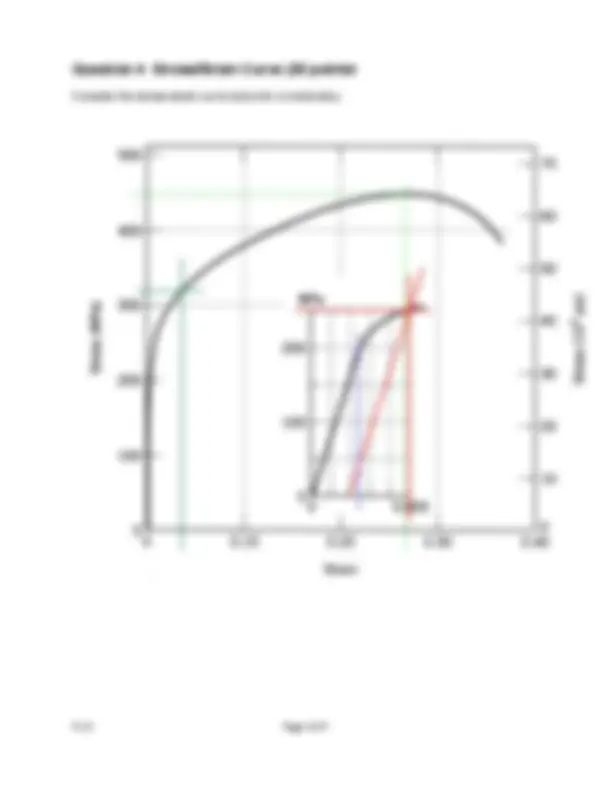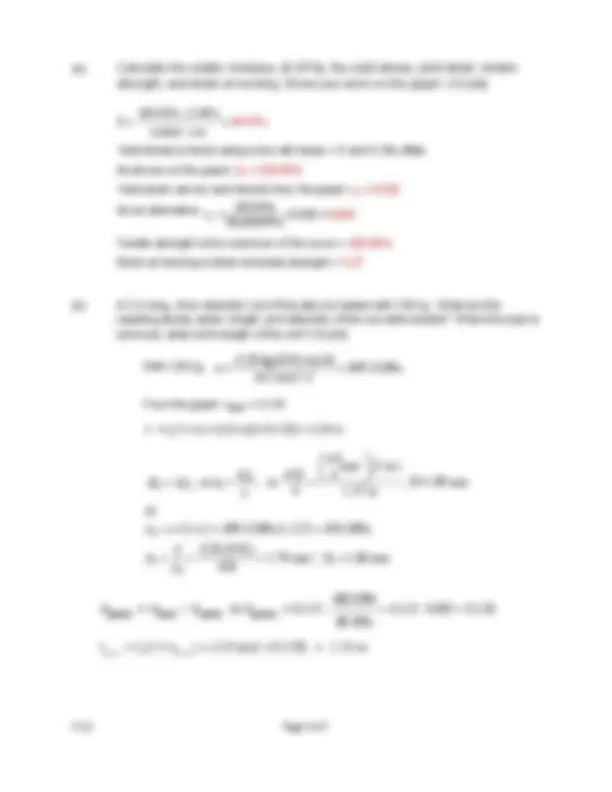





Study with the several resources on Docsity

Earn points by helping other students or get them with a premium plan


Prepare for your exams
Study with the several resources on Docsity

Earn points to download
Earn points by helping other students or get them with a premium plan
Community
Ask the community for help and clear up your study doubts
Discover the best universities in your country according to Docsity users
Free resources
Download our free guides on studying techniques, anxiety management strategies, and thesis advice from Docsity tutors
Material Type: Exam; Professor: Schott; Class: Introduction to the Science of Engineering Materials; Subject: Materials Science; University: University of Minnesota - Twin Cities; Term: Fall 2012;
Typology: Exams
1 / 7

This page cannot be seen from the preview
Don't miss anything!




Red answers are correct.
a) T F The strain hardening exponent in the relationship
T
T
n
is equal
to the true strain at the point where necking begins.
b) T F A stiff material has a low modulus of elasticity.
c) T F Poisson’s ratio is based on constant volume in the elastic region
d) T F If Internal and surface cracks are initially the same size, the internal
crack will cause fatigue failure before the external crack.
e) T F The Larson – Miller Parameter directly relates creep failure time to
applied stress.
f) T F Typical yield stresses for metals are in the range of 10-300 GPa.
g) T F The most important factor in determining a material’s resistance to
fracture is the number of cracks in it.
h) T F Crack growth rate in fatigue decreases as the crack length
increases.
i) T F Ceramics have higher K IC
values than metals.
j) T F K IC
is small for metals because they have some ductility.
k) T F Plastic deformation results in a permanent change in shape.
l) T F Crack propagation in brittle failure becomes easier as the crack
length increases.
m) T F Fracture can happen before the yield stress is reached.
n) T F For a brittle material, yield stress and tensile strength can be the
same
o) T F True stress is always smaller than Engineering stress.
The hook shown to the right will support a container of molten steel and must carry a load of
40,000 lb. The hook operates continuously at a temperature of 5 83 C. The relationship
between stress and Larson – Miller parameter is shown below:
3
L-M T 38.316 1.796log 10 day
t x
when T is in Kelvin and rupture time is in days. Note:
“log” is common log, base 10.
a) If the useful life of the hook, with a safety factor of 2, is to be 10 years of
continuous operation, what must be the diameter (in inches) of the indicated
portion of the hook? (10 pts)
3
2 2
Consider the stress-strain curve below for a metal alloy.
(a) Calculate the elastic modulus, (in GPa), the yield stress, yield strain, tensile
strength, and strain at necking. Show your work on the graph. (10 pts)
..
200 MPa 0 MPa
E
0 0
80
025 0 0
GPa
Yield stress is found using a line with slope = E and 0.2% offset.
As shown on the graph: y = 250 MPa
Yield strain can be read directly from the graph: y
= 0.
As an alternative, .
,
. y
250 MPa
0 002
80 000 M a
0
P
005
Tensile strength is the maximum of the curve = 450 MPa
Strain at necking is strain at tensile strength = 0.
(b) A 2 m long, 2mm diameter rod of this alloy is loaded with 1 28 kg. What are the
resulting stress, strain, length, and diameter of the rod while loaded? When the load is
removed, what is the length of the rod? (1 0 pts)
With 1 28 kg.,
2 2
(128 kg)(9.81 m)(4)
399.3 MPa
(2 mm) s
From the graph: total
= 0.
0
2
2
0 0
0 0
2
mm 2 m
, or , or , D=1.89 mm
4 2.25 m
or
1 399.3 MPa 1.125 450 MPA
A 2.79 mm , D 1.88 mm
i
i i i
i
T
i i
T
A l D
Al A l A
l
plastic 0 plastic
plastic total elastic plastic
400 MPa
80 GPa
(b) True stress and strain
Portion of the graph up to necking will be about the same as the engineering stress-
strain graph. The strain scale will expand as calculated below, and the true stress at
failure will be double the engineering stress at failure since the necking area is ½ the
original area.
Justify your strain axis in (b) by an appropriate calculation. (5 pts)
Beyond the onset of necking, true strain must be calculated by area ratio. At fracture, the area
is ½ the original area.
0
0
ln ln ln(2) 0.
i
T
i
l A
l A
0
1
2
3
0 0.1 0.2 0.3 0.4 0.5 0.6 0.7 0.